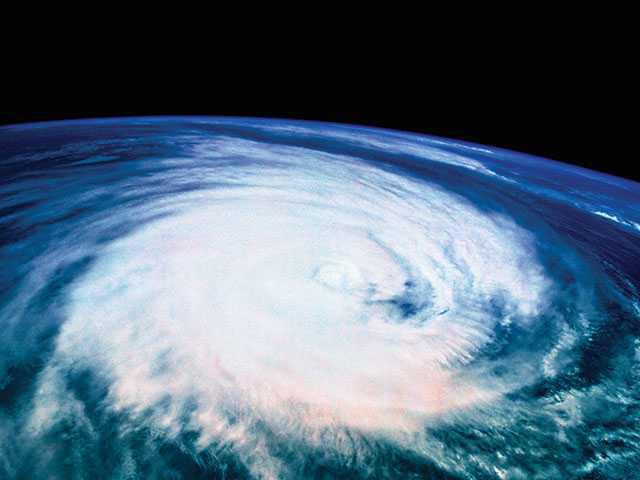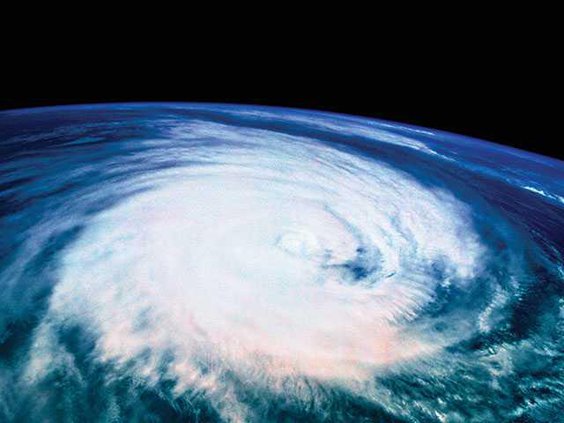Despite a premature start to the Atlantic hurricane season — with Tropical Storm Ana making landfall in the Myrtle Beach, South Carolina, area in early May — forecasters predict that the number of storms this year will again fall below normal.
There have been only four below-normal seasons total in the past 20 years.
With eight named storms, four of which could become hurricanes, including one major hurricane (Category 3 and higher, with winds of 111 mph or higher) predicted for the Atlantic Basin this season, AccuWeather.com’s long-range forecasting team anticipates two or three of these systems to make landfall in the United States.
The National Hurricane Center says there is a
70 percent chance of six to
11 named storms, three to six of which could become hurricanes, including up to two major hurricanes.
And the Tropical Meteorology Project at Colorado State University predicts eight named storms (including Ana in May), three of which would be hurricanes, including one major hurricane.
“Last year’s hurricane numbers were a little bit higher than what we’re forecasting right now, but the environmental conditions are somewhat similar to last year,” meteorologist Dan Kottlowski said.
“Last year’s upper-level winds actually looked like an El Niño-type pattern, so what we got last year will be pretty much the same as this year,” he said.
El Niño usually causes frequent periods of high wind shear. Wind shear causes the vertical column of spinning air within a system to become tilted, inhibiting the development of storms.
However, the similarities between 2014 and 2015 do not suggest that storms will develop in the same spots as last year, Kottlowski stressed.
And National Oceanic and Atmospheric administrator Dr. Kathryn Sullivan said people should still be vigilant even if only a small number of named storms are forecast.
“A below-normal season doesn’t mean we’re off the hook. As we’ve seen before, below-normal seasons can still produce catastrophic impacts to communities,” Sullivan said. She referred to the 1992 season in which only seven named storms formed, yet the first was Andrew, a Category 5 hurricane that devastated South Florida.
A combination of drier-than-normal air and colder water over an important region of the southern North Atlantic will affect where storms form.
In 2014, only one named storm, Hurricane Arthur, hit the U.S., disrupting Independence Day festivities along the Eastern Seaboard.
This year, the biggest area of concern is the Gulf of Mexico.
“The water temperatures are warmer (in the Gulf) than in the past few years, and this could support early season development,” Kottlowski said. “But, I don’t want to diminish the potential for anywhere along the coast to be hit by a hurricane or a tropical storm this year.”
Above all else, Kottlowski urges those in coastal areas to prepare for this season.
Know if you live in an evacuation zone and, if you do, know your evacuation route in advance. Update or create a hurricane-preparation kit, which should include copies of all important documents and items you would take with you to a hurricane shelter. Also, check your insurance coverage and buy non-perishable supplies now, he said.
“Just because this season’s numbers are low, it doesn’t mean that people should let their guard down,” he said. “It only takes one storm to cause a lot of destruction.”
Federal Emergency Management Agency deputy administrator Joseph Nimmich agreed.
“It only takes one hurricane or tropical storm making landfall in your community to significantly disrupt your life,” Nimmich said. “Everyone should take action now to prepare themselves and their families for hurricanes and powerful storms. Develop a family communications plan, build an emergency supply kit for your home and take time to learn evacuation routes for your area. Knowing what to do ahead of time can literally save your life and help you bounce back stronger and faster should disaster strike in your area.”
Below-average hurricane season forecast; officials advise readiness


Sign up for our e-newsletters